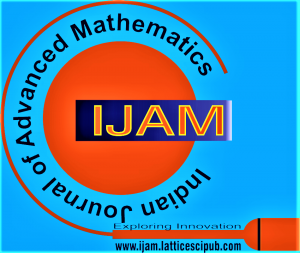![]()
Effectiveness of Oral Tests in Improving Learners’ Mathematical Performance
Ahmad Hedayatpanah Shaldehi
Igor Stepanov, Scholar/Institute of Science and Innovative Technologies, Liepaja University, Liepaja, Latvia, LV-3401.
Manuscript received on 22 September 2021 | Revised Manuscript received on 03 October 2021 | Manuscript Accepted on 15 October 2021 | Manuscript published on 30 October 2021 | PP: 41-46 | Volume-1 Issue-2, October 2021 | Retrieval Number:100.1/ijam.B11111012S21 | DOI: 10.54105/ijam.B1111.101221
Open Access | Ethics and Policies | Cite | Mendeley | Indexing and Abstracting
© The Authors. Published by Lattice Science Publication (LSP). This is an open-access article under the CC-BY-NC-ND license (http://creativecommons.org/licenses/by-nc-nd/4.0/)
Abstract: The main purpose of this paper is, the effect of guided oral questions in mathematics lessons on evaluation formative testing in Increase academic achievement. The sample of the Research consisted of two 23-person classes from computer students at the University of Dr. Moien Rasht. Both classes took pre-test, with a common question from the semester’s lessons. Randomly, Class A was selected as the control, and Class B was selected as the experiment .In Class A, after 6 weeks of teaching, evaluation formative the classical test was formally written (paper-and-pencil) .Group B students, with the same content of Class A teaching, received group Oral (participatory) instead of, formative tests. Group members were selected based on formula, According to the attention, pre-test scores value, and other Indicators. At the end of the semester, both classes were aggregated with the same question, and the scores of both classes were analyzed by descriptive and inferential statistics, t and ES .Statistical analysis showed that learning rate increased in both control and experimental groups. But in cumulative Evaluation, the mean scores of the experimental group were higher than the Average scores of the control group. While in the pre-test, the control group scores were higher than the experimental group. The area under the corresponding curve, ES = .96, is / 831. That is, the area under the curve corresponding to the test group members, on whom the developmental test was orally administered, their mathematics lesson scores were83.15 higher than the control group.
Keywords: Effect size, Oral, Participatory, Formative Evaluation, Mathematical, Cumulative Evaluation.
Scope of the Article: Mathematical Physics
